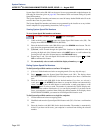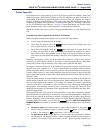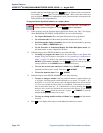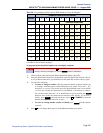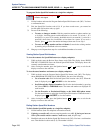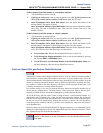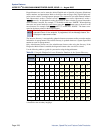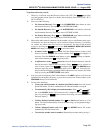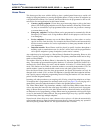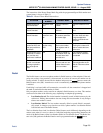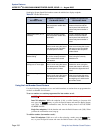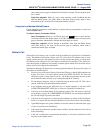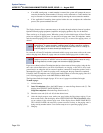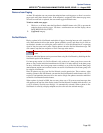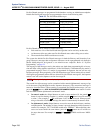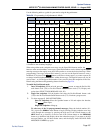
System Features
INTER-TEL
®
CS-5200/5400 ADMINISTRATOR GUIDE, ISSUE 1.1 – August 2005
Page 230 House Phone
House Phone
This feature provides users with the ability to place a predesignated intercom or outside call
simply by lifting the handset (or pressing the Speaker button, if using an Inter-Tel endpoint) on
a designated House Phone. In a network, the House Phone can be programmed to dial an off-
node device. Several applications for this feature include:
• Courtesy paging endpoint: Visitors hear pages instructing them to pick up the house
phone (such as the paging endpoints used in airport terminals). When they lift the hand-
set, they are connected to a pre-programmed station user who can give them a message
or connect them to a call.
• Emergency endpoint: The House Phone can be programmed to automatically dial the
Emergency Call feature code. Using the House Phone for this purpose could save time
in an emergency.
• Service endpoint: Customers can use the House Phone(s) to place orders or receive
special services from the lobby. For example, the House Phone would automatically
dial the extension number of a service representative (or hunt group number of the ser-
vice department).
• Intercom network: House Phones could be placed in specific locations throughout a
building (such as examination rooms in a doctor’s office) and could be programmed to
call a specific endpoint or group of endpoints (such as nurses’ stations).
Any endpoint may be designated as a House Phone in Database Programming. However, this
feature is usually assigned to single line endpoints. The primary Attendant should not be desig-
nated as a House Phone.
The number dialed by the House Phone is determined by the station’s Speed Dial program-
ming. The number programmed through the database or in Station Speed Dial location 0 is
automatically dialed during day mode, and the number in location 1 is dialed during night
mode. This number can be either an extension number or an outside phone number. If it is an
outside number, it must be preceded with a trunk access code (and a pause if necessary).
Once the House Phone status has been programmed, the Speed Dial number can only be
changed while on-hook (if it is an Inter-Tel endpoint) or through individual endpoint informa-
tion (special purpose endpoint) programming because lifting the handset will cause the end-
point to dial the designated number.
Incoming calls take precedence over outgoing calls. If using a single line endpoint or an Inter-
Tel endpoint that is programmed for automatic trunk access (see page 170), any ringing call is
automatically answered when the handset is lifted or the Speaker button is pressed.
The “House Phone Mode” flag determines whether a single line House Phone returns dial tone
or does not return dial tone after the called party disconnects. At the System level of program-
ming, all House Phones may be set in either Normal mode or Restricted mode. At the individ-
ual Endpoint level of programming, a House Phone must be programmed to dial specific digits
as soon as the handset is taken off-hook. The programmed digits may ring a specific endpoint
or a Hunt Group that rings multiple endpoints.
Normal mode allows the user to enter a feature code or place a call after the automatically
called number hangs up. Restricted mode prevents the user from performing any operation
other than placing a House Phone call. The System default state is Normal.



